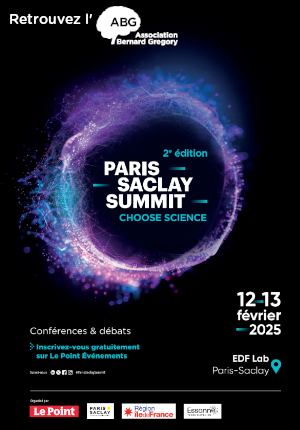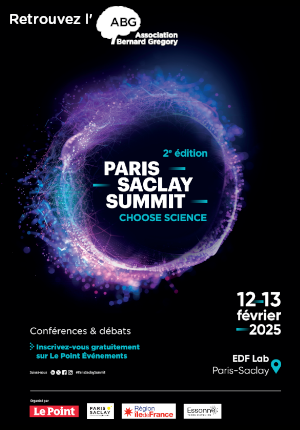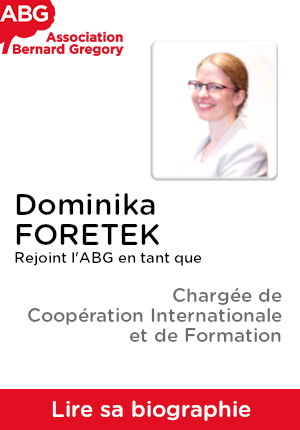Métasurfaces pour l’ amélioration de l'efficacité des µLEDs à conversion // improving effiiciency and directivity in color conversion µLEDs with metasurfaces
| ABG-128260 | Thesis topic | |
| 2025-02-01 | Public/private mixed funding |
CEA Laboratoire d'Intégration des Technologies Emissives
Grenoble
Métasurfaces pour l’ amélioration de l'efficacité des µLEDs à conversion // improving effiiciency and directivity in color conversion µLEDs with metasurfaces
- Engineering sciences
Optique - Optique laser - Optique appliquée / Sciences pour l’ingénieur / Interactions rayonnement-matière / Physique de l’état condensé, chimie et nanosciences
Topic description
Dans le contexte de la réalité augmentée, réaliser des matrices de µLEDs RGB est la prochaine étape afin de miniaturiser et simplifier le système optique dans sa globalité. Afin de réaliser de tels dispositifs, une des approches envisagées est de réaliser des matrices de µLEDs en GaN/InGaN bleues et d’appliquer des convertisseurs de couleur vers le rouge et le vert au dessus de cette matrice. Cependant, les applications de réalité augmentée requièrent des dispositifs émissifs directifs, ce qui est à priori difficile à réaliser car l’émission spontanée des convertisseurs est à priori isotrope. Cependant il a récemment été démontré par le laboratoire Charles Fabry (thèse de E. Bailly et direction de cette thèse) que la combinaison de métasurfaces avec des convertisseurs couleurs pouvaient permettre de réaliser de l’émission directive. Le but de cette thèse est alors d’appliquer cette approche en la combinant avec des µLEDs bleues réalisées au CEA-LETI. Durant cette thèse l’étudiant designera les dispositifs afin de les rendre efficaces et avec une émission directive. Puis dans un deuxième temps des dispositifs seront réalisés en salle blanche au LETI et caractérisés opto-électriquement.
La première partie de cette thèse (le design) sera réalisée par l’étudiant principalement dans les locaux du laboratoire Charles Fabry sur le plateau de Saclay, puis il rejoindra le CEA-LETI au sein du LITE à Grenoble pour les aspects de caractérisation et de comparaison avec les simulations.
Les travaux du Laboratoire d'Intégration des Technologies Emissives portent sur l'intégration de la fabrication d'émetteurs µLED, OLED et LCD en environnement de type fonderie microélectronique sur silicium. Il s'agit par exemple d'améliorer les performances de micro-écrans sur ASIC tout en diminuant la taille caractéristique des pixels émetteurs, ou encore de démontrer de nouveaux usages de ces sources lumineuses dans le domaine des capteurs optiques biomédicaux.
------------------------------------------------------------------------------------------------------------------------------------------------------------------------
------------------------------------------------------------------------------------------------------------------------------------------------------------------------
In the field of augmented reality, the development of full color µLEDs matrices is a critical step towards miniaturizing and simplifying the optical system. Current pixel architectures in microLEDs displays are based on color conversion. Short wavelength emission from a first active material is absorbed by a second active layer to be re-emitted at longer wavelength. In current architectures, re-emission follows a lambertian profile making them unsuitable for AR/VR applications.
Recent work by the Charles Fabry laboratory - Institut d’Optique, as part of E. Bailly's thesis, has demonstrated that combining metasurfaces with color converters can enable shaping the radiation pattern. The primary goal of this thesis is to apply this innovative method by integrating it with blue GaN µLEDs developed at CEA-LETI.
Throughout this thesis, the student will first design the devices using optical simulations, aiming to optimize them for both efficiency and directional angular radiation pattern. Following this, the student will fabricate the devices in the clean room at LETI and perform opto-electrical characterization.
The initial design phase will primarily take place at the Quantum Nanophotonics and Plasmonics team of Charles Fabry laboratory - Institut d’Optique, in Saclay, under the supervision of the thesis director. The student will then move to CEA-LETI in Grenoble for the fabrication, characterization and comparison with simulation results.
The selected student will benefit from the extensive expertise in nano-photonics and simulation at the Charles Fabry laboratory, as well as the technological, simulation, and characterization expertise in µLEDs at CEA-LETI.
The Quantum Nanophotonics and Plasmonics at Institut d’Optique team investigates the physics and engineering of spontaneous light emission (fluorescence, incandescence, electroluminescence), at different scales (quantum regime with single photon and single atoms, collective effects, photon condensates, condensed matter systems…).
The LITE (Emissive Technologies Integration Laboratory) at CEA-LETI focuses on manufacturing microemitting devices (µLED, OLED, LCD) in a silicon microelectronics foundry-type environment. This includes, for example improving µdisplays performances, made above ASICs, while reducing the pixel size, or demonstrating new use cases of these light sources in the field of biomedical optical sensors.
------------------------------------------------------------------------------------------------------------------------------------------------------------------------
------------------------------------------------------------------------------------------------------------------------------------------------------------------------
Pôle fr : Direction de la Recherche Technologique
Pôle en : Technological Research
Département : Département d’Optronique (LETI)
Service : Service des Nouvelles Applications de la Photonique
Laboratoire : Laboratoire d'Intégration des Technologies Emissives
Date de début souhaitée : 01-09-2025
Directeur de thèse : VEST Benjamin
Organisme : Université Paris-Saclay - Institut d'Optique - Laboratoire Charles Fabry
La première partie de cette thèse (le design) sera réalisée par l’étudiant principalement dans les locaux du laboratoire Charles Fabry sur le plateau de Saclay, puis il rejoindra le CEA-LETI au sein du LITE à Grenoble pour les aspects de caractérisation et de comparaison avec les simulations.
Les travaux du Laboratoire d'Intégration des Technologies Emissives portent sur l'intégration de la fabrication d'émetteurs µLED, OLED et LCD en environnement de type fonderie microélectronique sur silicium. Il s'agit par exemple d'améliorer les performances de micro-écrans sur ASIC tout en diminuant la taille caractéristique des pixels émetteurs, ou encore de démontrer de nouveaux usages de ces sources lumineuses dans le domaine des capteurs optiques biomédicaux.
------------------------------------------------------------------------------------------------------------------------------------------------------------------------
------------------------------------------------------------------------------------------------------------------------------------------------------------------------
In the field of augmented reality, the development of full color µLEDs matrices is a critical step towards miniaturizing and simplifying the optical system. Current pixel architectures in microLEDs displays are based on color conversion. Short wavelength emission from a first active material is absorbed by a second active layer to be re-emitted at longer wavelength. In current architectures, re-emission follows a lambertian profile making them unsuitable for AR/VR applications.
Recent work by the Charles Fabry laboratory - Institut d’Optique, as part of E. Bailly's thesis, has demonstrated that combining metasurfaces with color converters can enable shaping the radiation pattern. The primary goal of this thesis is to apply this innovative method by integrating it with blue GaN µLEDs developed at CEA-LETI.
Throughout this thesis, the student will first design the devices using optical simulations, aiming to optimize them for both efficiency and directional angular radiation pattern. Following this, the student will fabricate the devices in the clean room at LETI and perform opto-electrical characterization.
The initial design phase will primarily take place at the Quantum Nanophotonics and Plasmonics team of Charles Fabry laboratory - Institut d’Optique, in Saclay, under the supervision of the thesis director. The student will then move to CEA-LETI in Grenoble for the fabrication, characterization and comparison with simulation results.
The selected student will benefit from the extensive expertise in nano-photonics and simulation at the Charles Fabry laboratory, as well as the technological, simulation, and characterization expertise in µLEDs at CEA-LETI.
The Quantum Nanophotonics and Plasmonics at Institut d’Optique team investigates the physics and engineering of spontaneous light emission (fluorescence, incandescence, electroluminescence), at different scales (quantum regime with single photon and single atoms, collective effects, photon condensates, condensed matter systems…).
The LITE (Emissive Technologies Integration Laboratory) at CEA-LETI focuses on manufacturing microemitting devices (µLED, OLED, LCD) in a silicon microelectronics foundry-type environment. This includes, for example improving µdisplays performances, made above ASICs, while reducing the pixel size, or demonstrating new use cases of these light sources in the field of biomedical optical sensors.
------------------------------------------------------------------------------------------------------------------------------------------------------------------------
------------------------------------------------------------------------------------------------------------------------------------------------------------------------
Pôle fr : Direction de la Recherche Technologique
Pôle en : Technological Research
Département : Département d’Optronique (LETI)
Service : Service des Nouvelles Applications de la Photonique
Laboratoire : Laboratoire d'Intégration des Technologies Emissives
Date de début souhaitée : 01-09-2025
Directeur de thèse : VEST Benjamin
Organisme : Université Paris-Saclay - Institut d'Optique - Laboratoire Charles Fabry
Funding category
Public/private mixed funding
Funding further details
Presentation of host institution and host laboratory
CEA Laboratoire d'Intégration des Technologies Emissives
Pôle fr : Direction de la Recherche Technologique
Pôle en : Technological Research
Département : Département d’Optronique (LETI)
Service : Service des Nouvelles Applications de la Photonique
Candidate's profile
Master 2/ école d'ingénieur en optique et nanosciences
Apply
Close
Vous avez déjà un compte ?
Nouvel utilisateur ?
More information about ABG?
Get ABG’s monthly newsletters including news, job offers, grants & fellowships and a selection of relevant events…
Discover our members
 MabDesign
MabDesign  CESI
CESI  SUEZ
SUEZ  PhDOOC
PhDOOC  ANRT
ANRT  Institut Sup'biotech de Paris
Institut Sup'biotech de Paris  Généthon
Généthon  Ifremer
Ifremer  ONERA - The French Aerospace Lab
ONERA - The French Aerospace Lab  Tecknowmetrix
Tecknowmetrix  MabDesign
MabDesign  TotalEnergies
TotalEnergies  ADEME
ADEME  CASDEN
CASDEN  Laboratoire National de Métrologie et d'Essais - LNE
Laboratoire National de Métrologie et d'Essais - LNE  Aérocentre, Pôle d'excellence régional
Aérocentre, Pôle d'excellence régional  Groupe AFNOR - Association française de normalisation
Groupe AFNOR - Association française de normalisation  Nokia Bell Labs France
Nokia Bell Labs France  Institut de Radioprotection et de Sureté Nucléaire - IRSN - Siège
Institut de Radioprotection et de Sureté Nucléaire - IRSN - Siège







